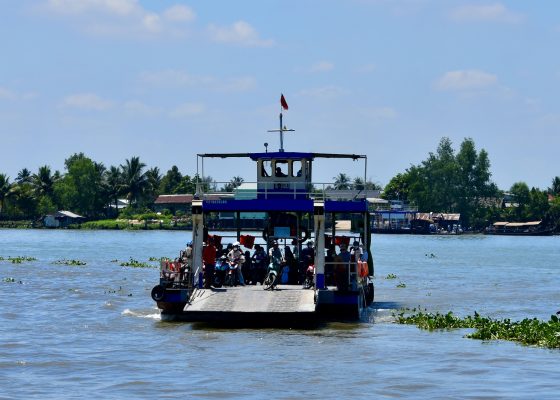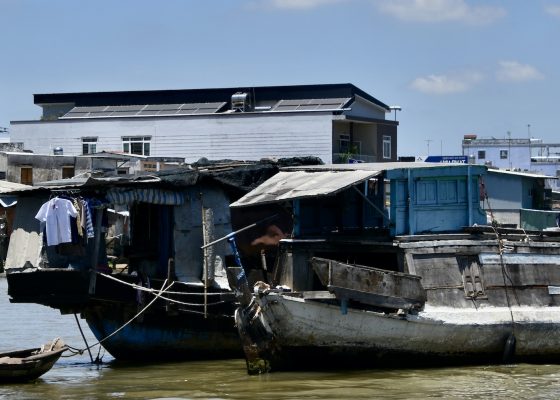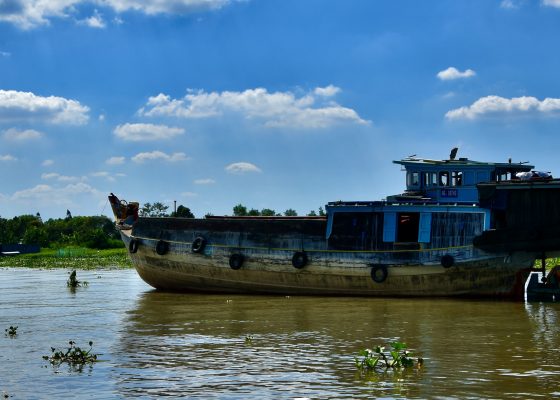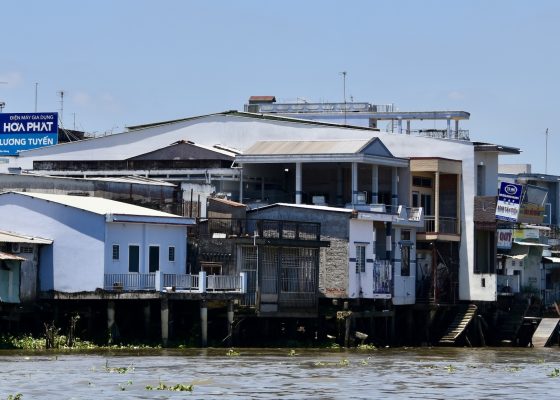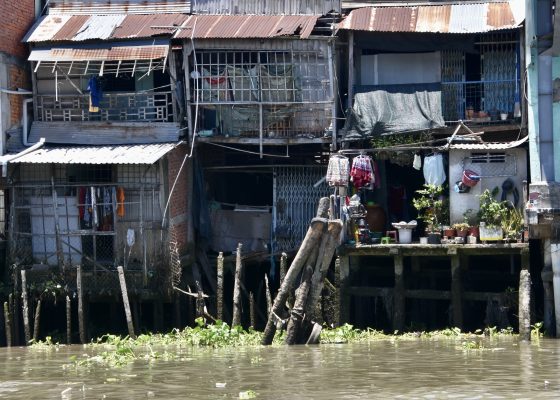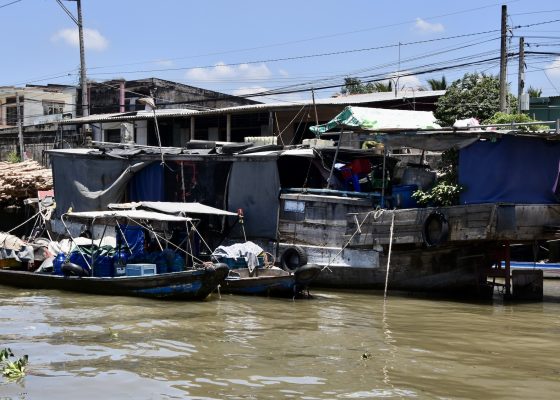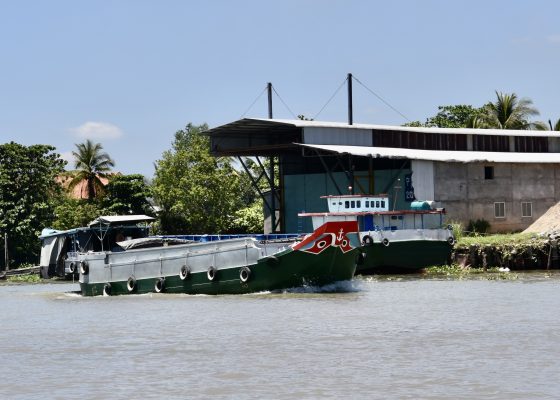Mekong Delta – Vietnam’s Endangered Lowlands
This is my ninth and final post from our 2023 trip to Vietnam with Adventures Abroad. In the last post our group toured Saigon and found out that the entrepreneurial spirit there marks it as quite different from Hanoi. In this last post we’ll head down to the Mekong Delta where the majority of Vietnam’s rice is grown and most of its fish is either wild caught or farm raised. It is an area that is under siege from rising ocean levels that threaten to drown much of it over the next fifty years. It is also the home of one of the most unique religions in the world and that’s where we’ll start our visit.
Cao Dai
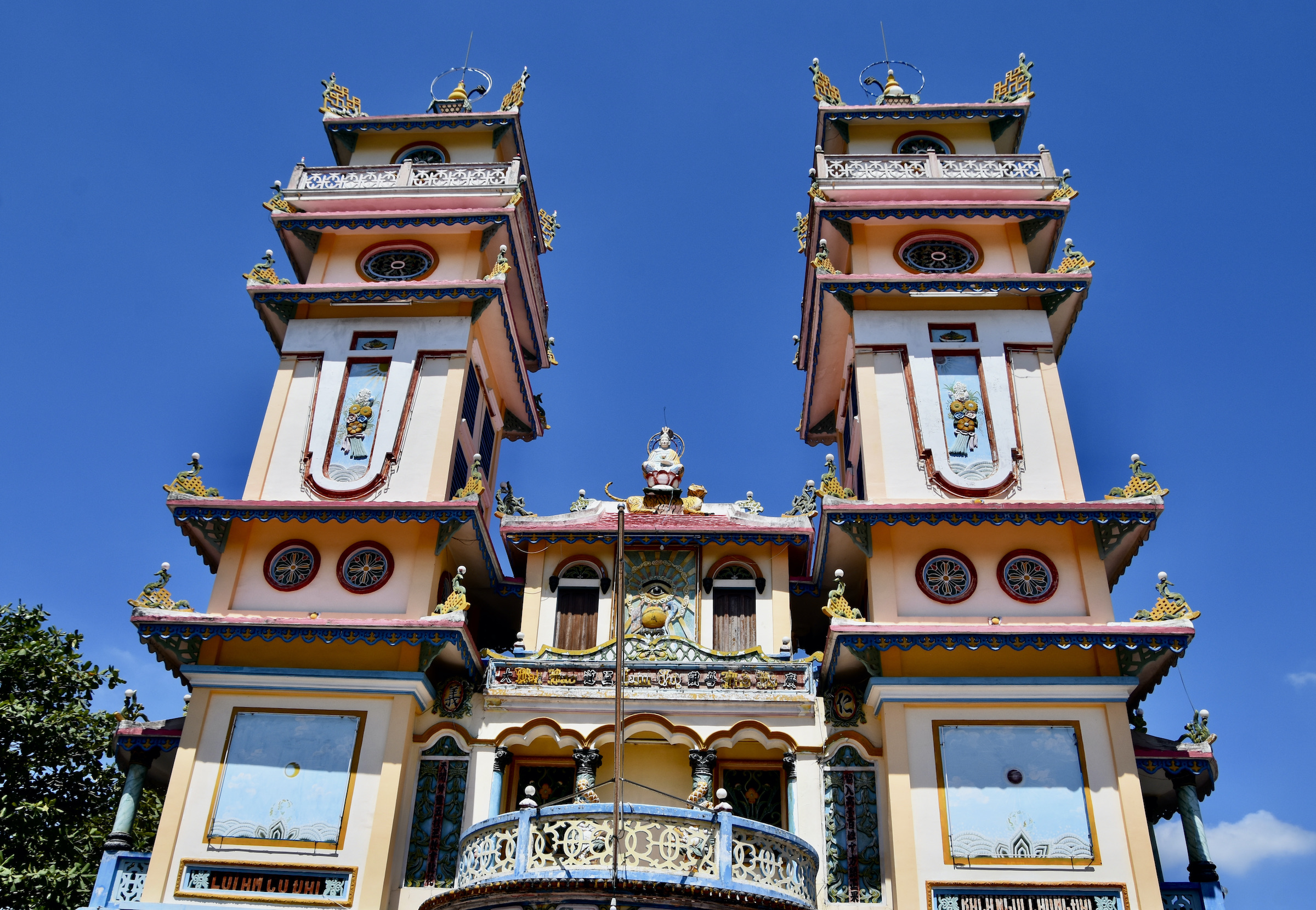
I have often written about syncretic religious beliefs in previous posts. This is the combining of a set of religious beliefs from different religions to create an entirely new religion. This usually occurs more by happenstance than the deliberate acts of any one person and takes place over time, often centuries. A good example is the cult of San Simon in Guatemala that combines elements of Catholicism, traditional Indigenous beliefs and a touch of something akin to voodoo.
However, Cao Dai is another kettle of fish altogether. It was essentially the creation of one man, Ngo Van Chieu who in the 1920’s claimed to have received a vision that led him to describe a new religion that combined Confucianism, Taoism, Buddhism and Catholicism into one unified system. Considering how different and at odds the tenets of these faiths are this was one heck of a feat. He managed to collect a number of adherents and here in the city of Tay Ninh in the Mekong Delta this amazing temple was constructed which is replete with symbols from all four religions.
Here are the four founding fathers so to speak – Buddha, Confucius, Jesus and Lao Tzu amid reps from other religions as well.
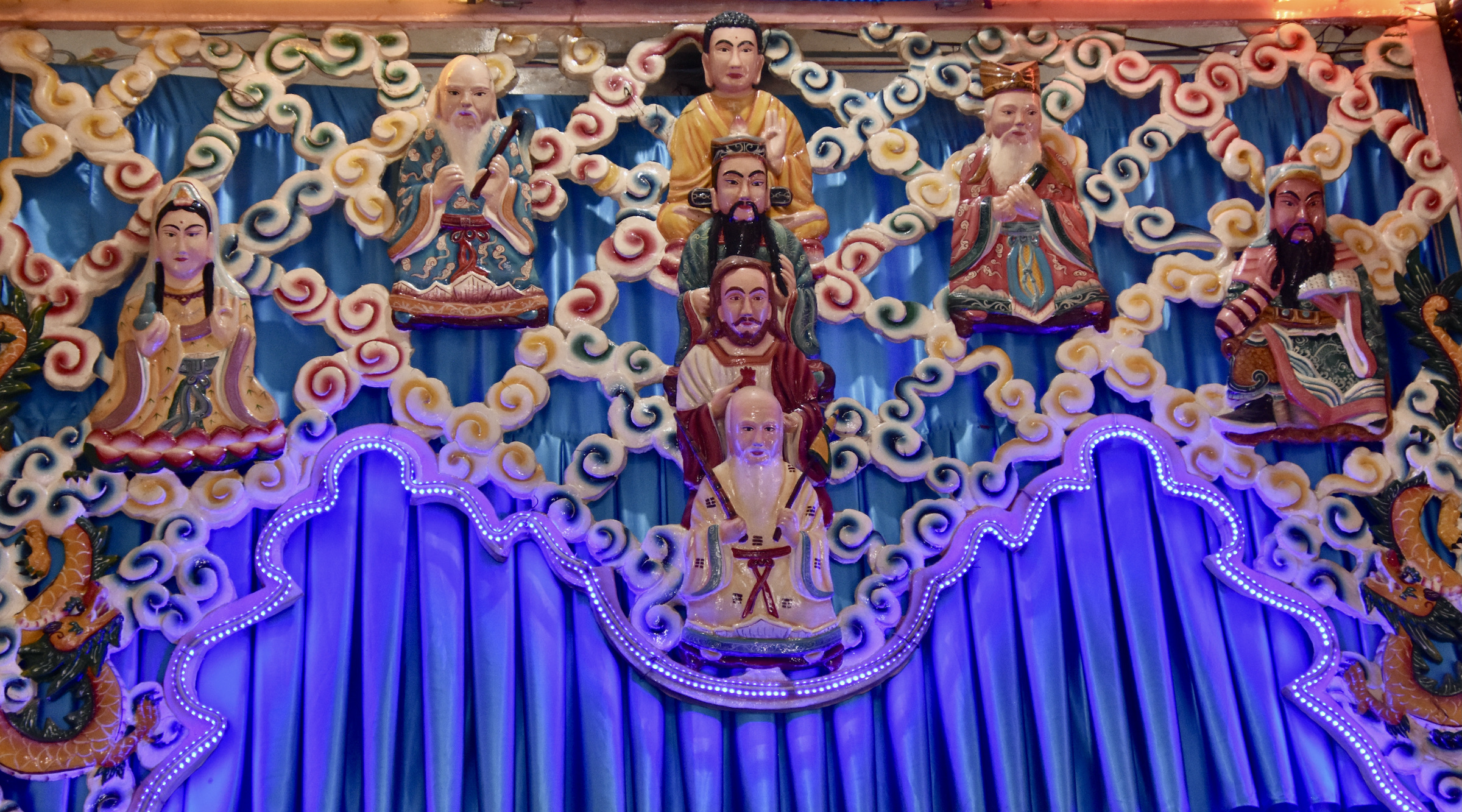
Now your first reaction might be that this was a crackpot idea that would go nowhere, but the religion survives today with up to six million faithful. There is even a replica of the Tay Ninh temple in Dallas, Texas.
Some of the symbols such as these swastikas might seem inappropriate, but in fact this symbol existed almost universally long before the Nazis misappropriated it.
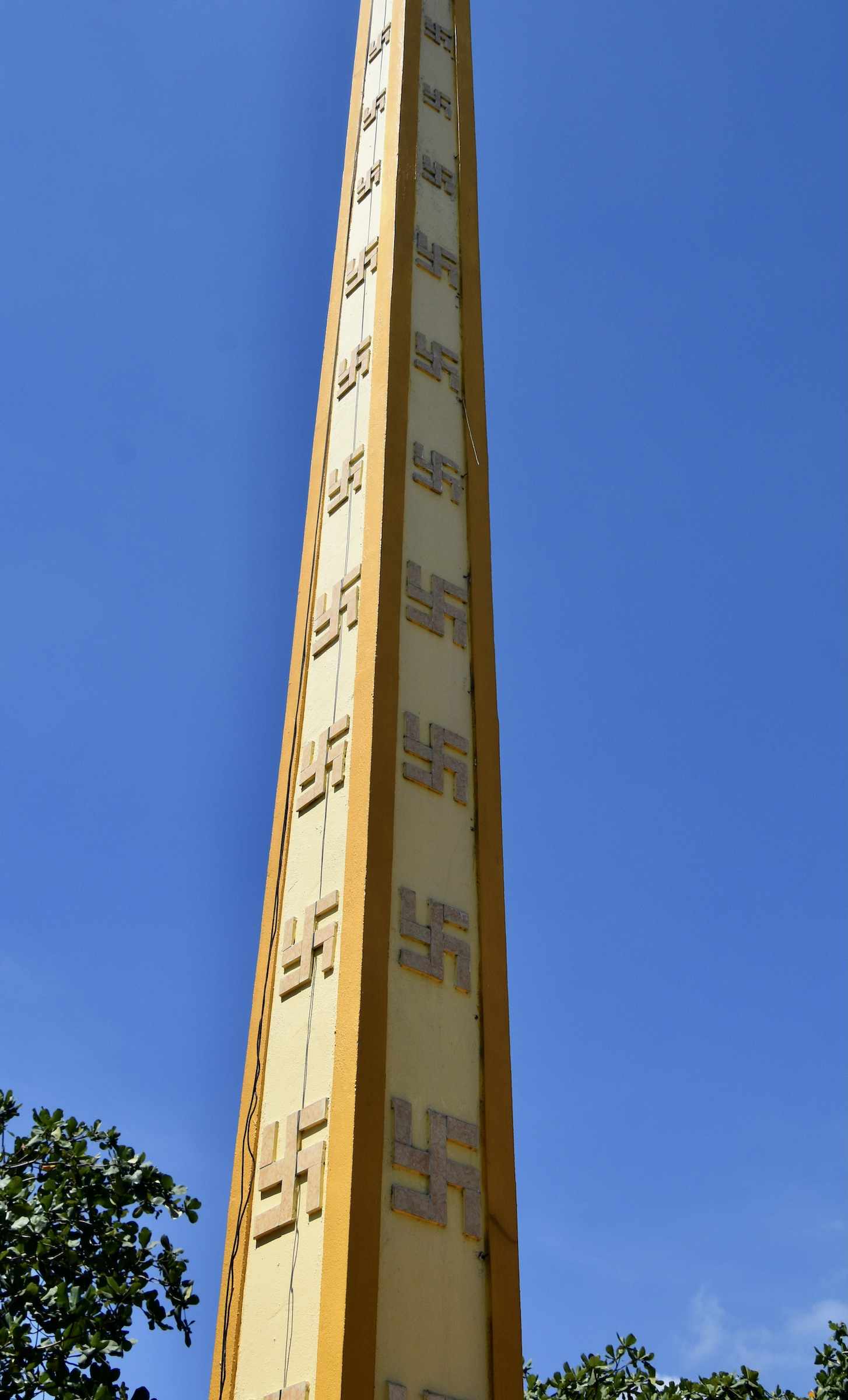
The most prominent symbol in Cao Dai is not the swastika, but another one that has been around since at least Egyptian times and still shows up on American currency, the Divine Eye.
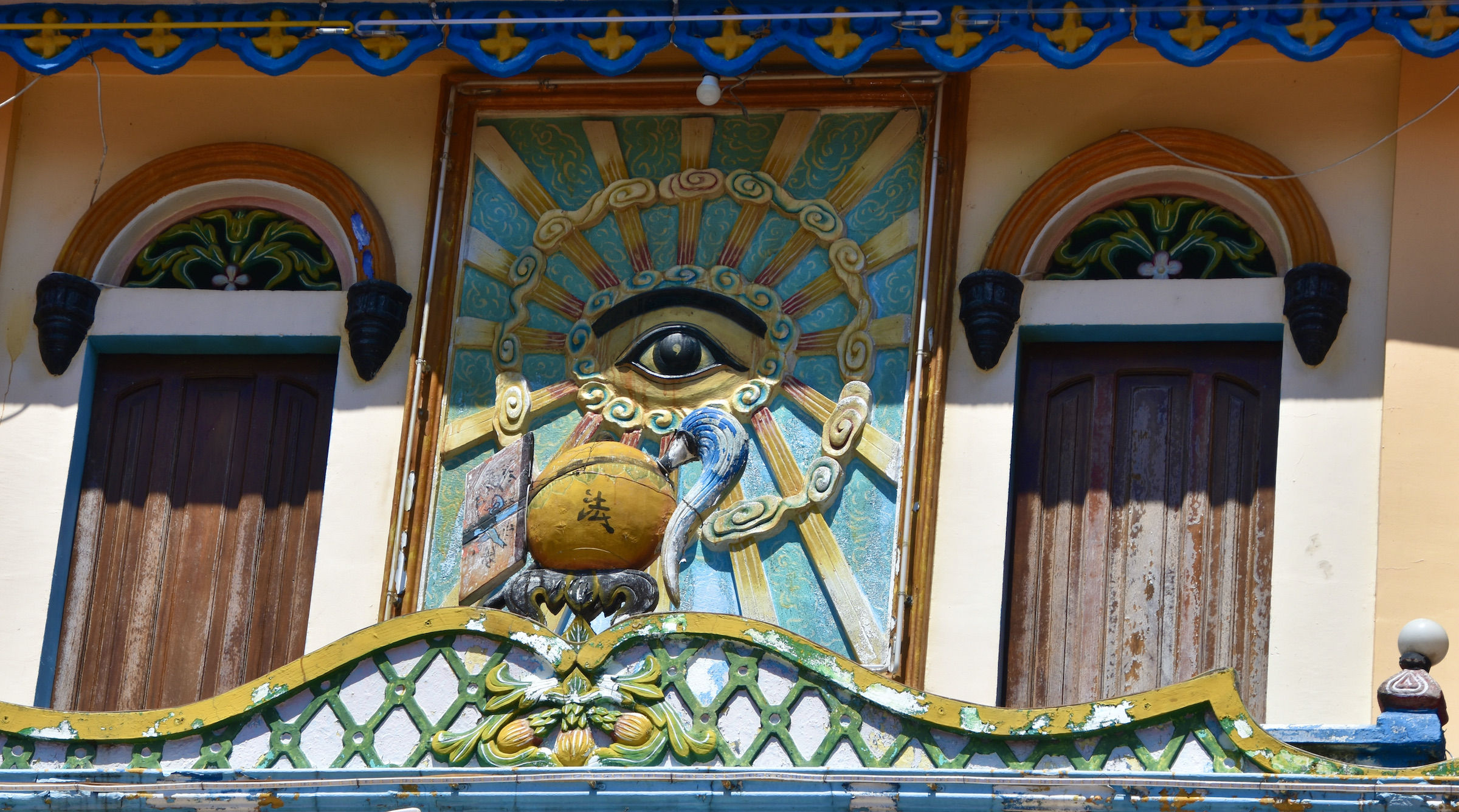
Cao Dai is not the only religion in the Mekong Delta with impressive churches. This is the Cai Be Catholic church which makes quite a sight coming around a bend in the river. There are still over 7 million practicing Catholics in Vietnam and while they are subject to government oversight, there is a lot more leeway today than there was at the onset of the Communist administration.
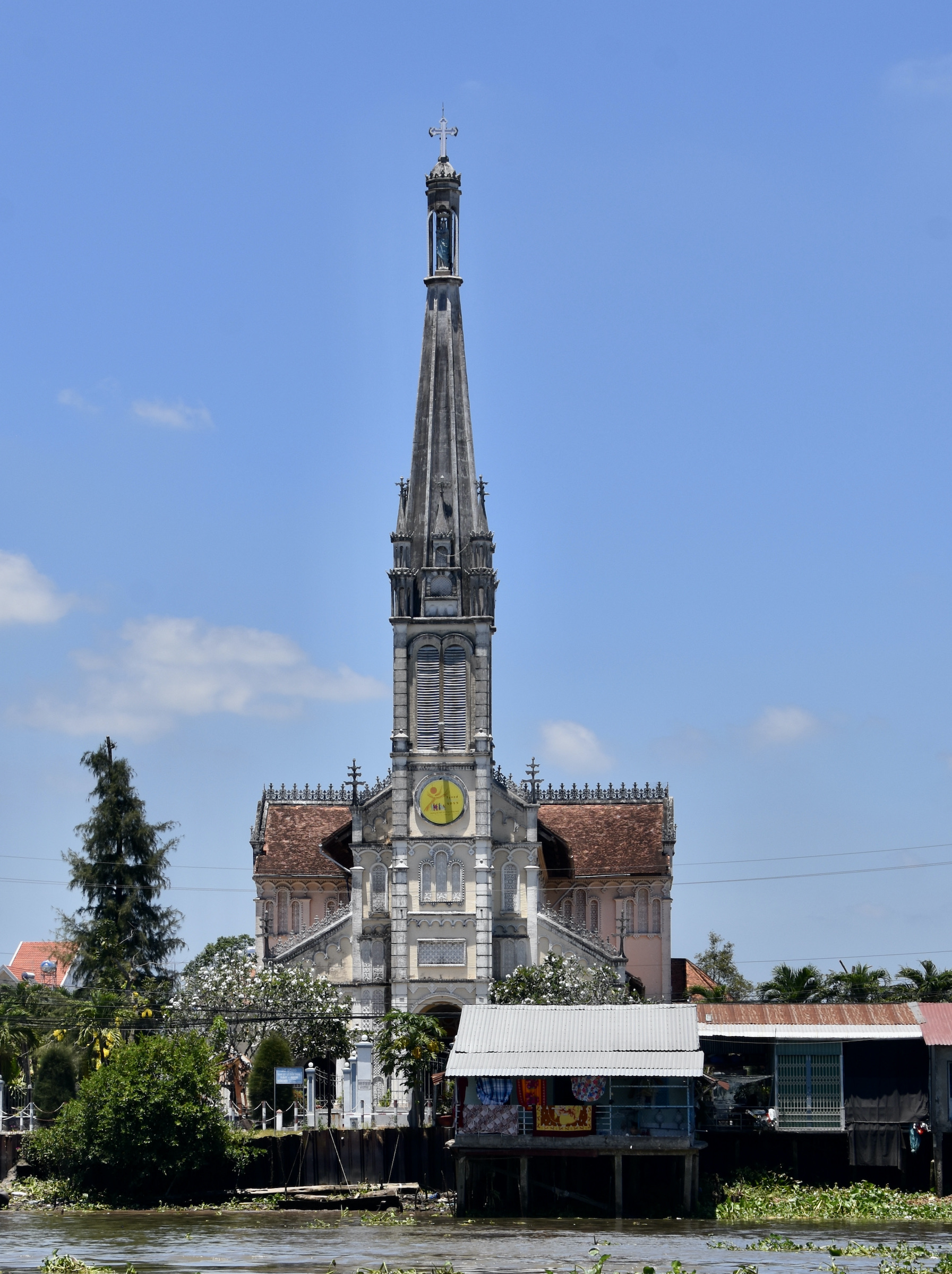
Exploring the Mekong Delta
But enough about religion, let’s talk about the Mekong Delta and how our group got around this watery wonderland. Mighty rivers tend to approach the oceans or seas into which they reach the end of their journey in one of two ways. Some like the Columbia, St. Lawrence or the Hudson expel such vast volumes of water at relatively high speeds that they do not form deltas. Others like the Amazon, Nile and in our case the Mekong, are just the opposite and build up huge quantities of silt that form deltas of tremendous size – 15,600 square miles for the Mekong. The other notable feature is that near the mouth the river breaks up into dozens of smaller channels known as distributaries which change constantly over time and makes the Mekong Delta a veritable ever changing maze.
The Mekong Delta differs from some other great delta systems in that it has a variety of flora and fauna unequalled anywhere else in the world. How about this incredible statistic – between 1997 and 2007 over 1,000 new species where identified for the first time. Even more incredible is this quote from the World Wildlife Fund documenting just the years 2021-22 – “A color-changing lizard, a thick-thumbed bat, a poisonous snake named after a Chinese mythological goddess, an orchid that looks like a Muppet, and a tree frog with skin that resembles thick moss are five of the 380 new species described by scientists in the Greater Mekong region of Southeast Asia in 2021 and 2022, according to a new report releasing soon by WWF.” We hear so much about species going or on the brink of extinction that it’s a pleasant surprise that so many new ones are being added. So without doubt, the Mekong Delta is a place of enormous importance for its biodiversity alone, but rising sea levels, pollution and invasive species threaten not only native species, but the people who live here as well.
One invasive species, the water hyacinth, is enemy number one in the Mekong Delta and entire distributaries have been clogged by it to the point of no longer being navigable. This photo is just a tiny fraction of the extent to which this plant, that incidentally loves polluted waters, has made life here an increasing challenge. I have seen the damage this plant from South America has wrought around the world, but nothing on the scale of the Mekong Delta.
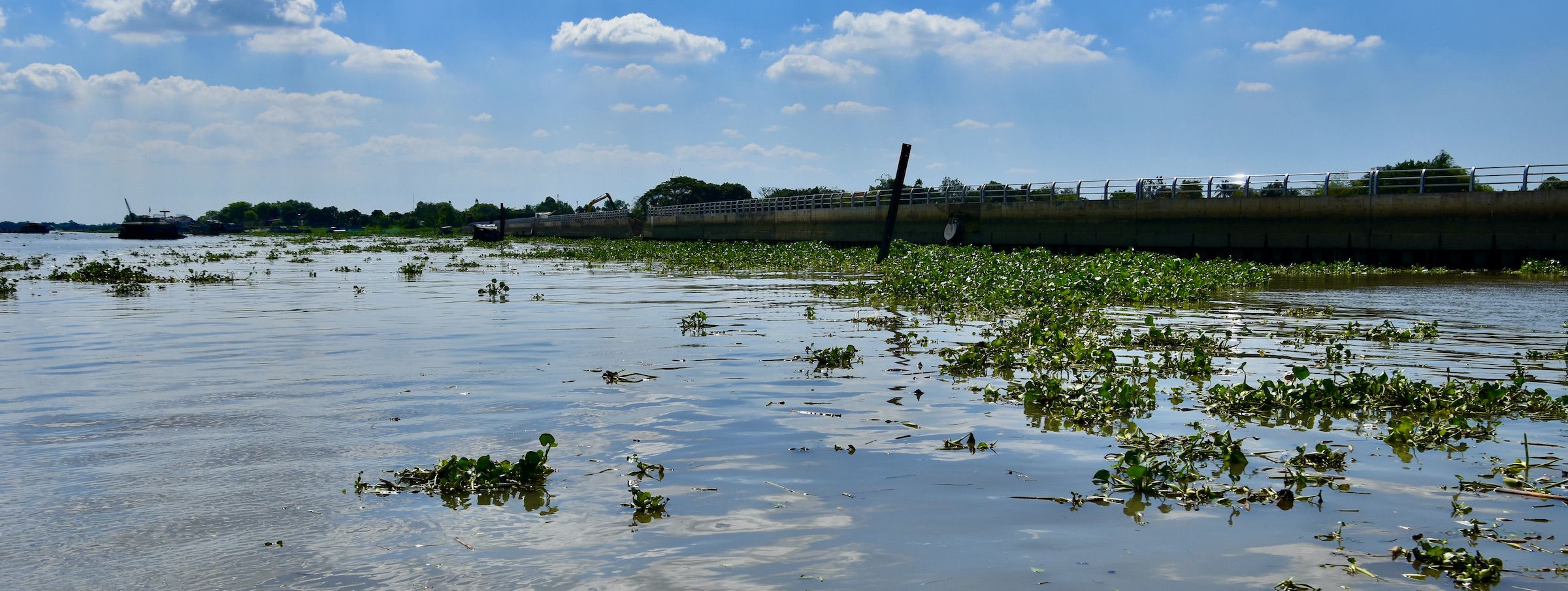
The reason that the water hyacinth is such a problem is that getting around by water is really the only transportation option in many parts of the Mekong Delta. There have been recent and very expensive endeavours to improve the road system by building a large number of suspension bridges of which this is not one, but it’s interesting in a whimsical way.
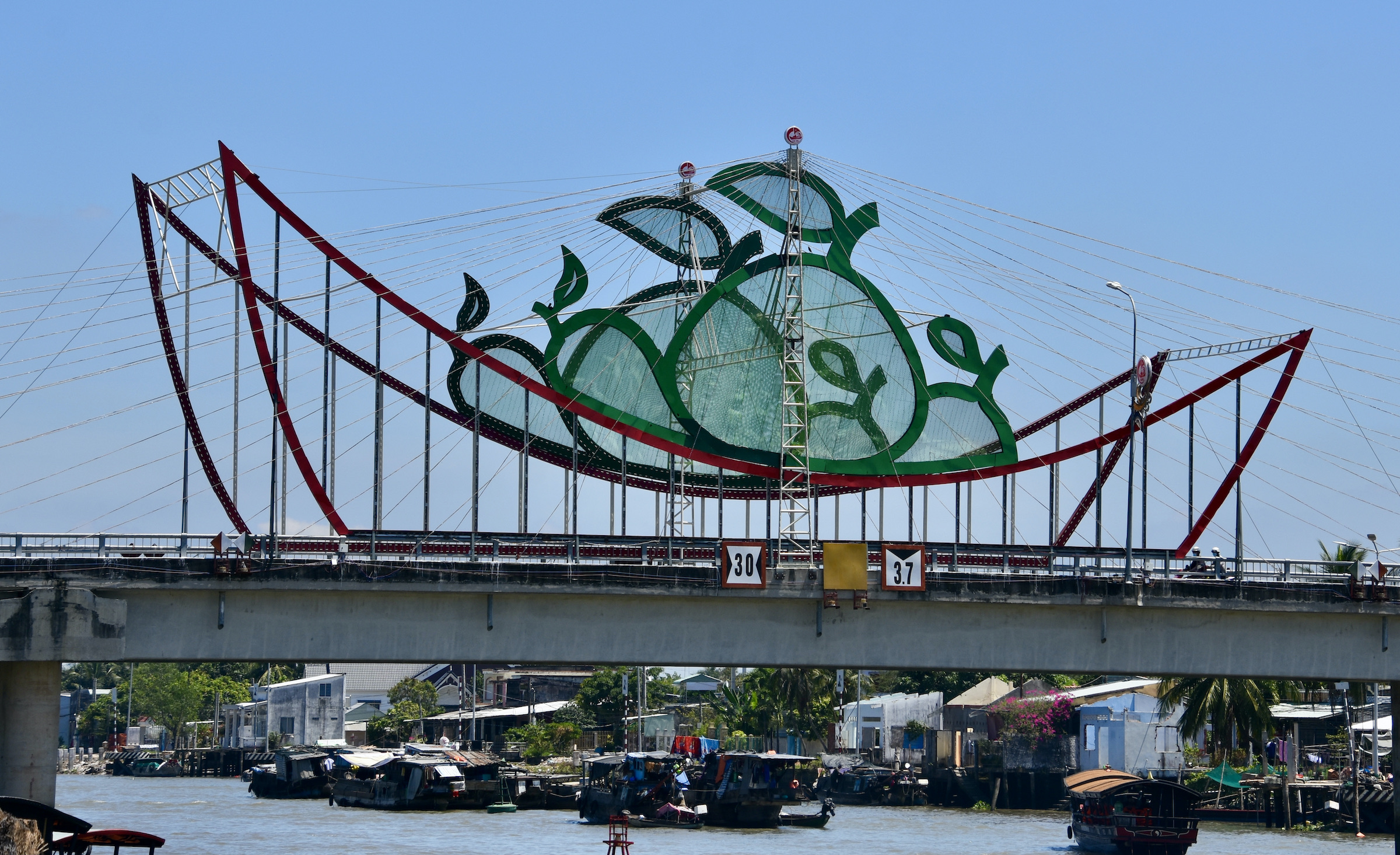
So for most people including our group, getting around by the water is the most practical and interesting way to visit the Mekong Delta. From the water you can observe life both on the river and in the many villages that have existed for centuries on the river banks. Here is a gallery of some of the things I observed during our time on the river. Double click to open a photo and double click again to enlarge.
- Mekong Delta Ferry
- Mekong House Boats
- Old Mekong Freighter
- Riverside Properties
- Ramshackle Houses
- River Dwellers
- Mekong Delta Barge
Then there is life on the Mekong Delta at the micro level.
The beautiful lotus flower has been considered sacred in this part of Asia for thousands of years and they provide a nice counterpoint to the water hyacinth.

Despite the murkiness of the water and the undoubted poor quality, that does not stop kids being kids and it was a joy to see them playing at splashing each other and roaring with laughter every time they scored a direct hit.

More serious was this woman hunting for river snails. Apparently you can make a living doing this in the Mekong Delta.
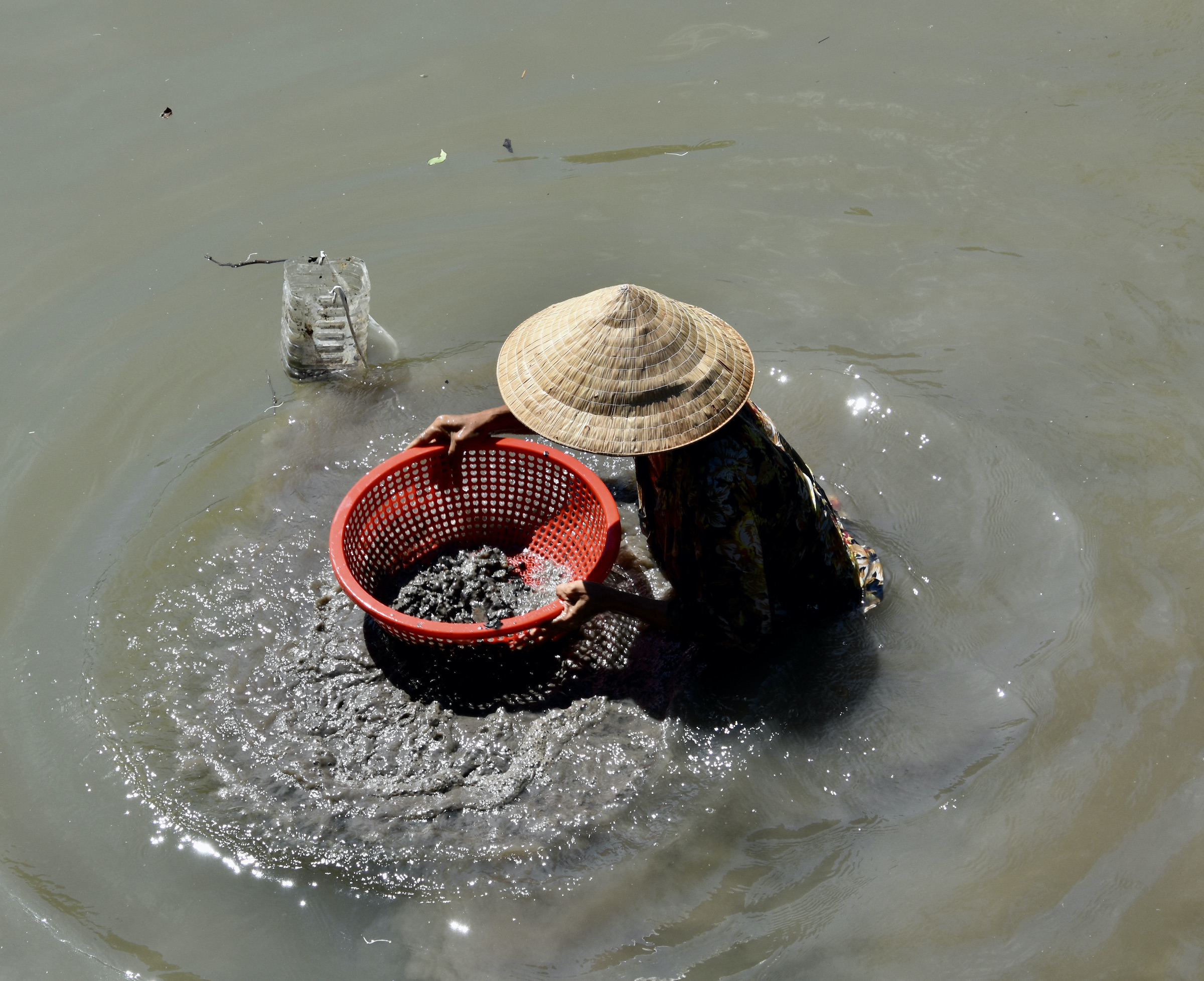
We did visit one of the most hyped things to see in the Mekong Delta, a floating market, but frankly there were more tourist boats than vendors and it reminded me of Halong Bay all over again. I found far more pleasure in scenes like the ones above than the floating market.
I also really enjoyed a stop we made to visit a tiny village where we were treated to a mini drama that was actually very entertaining. But first we had to walk through a coffin shop to get there.
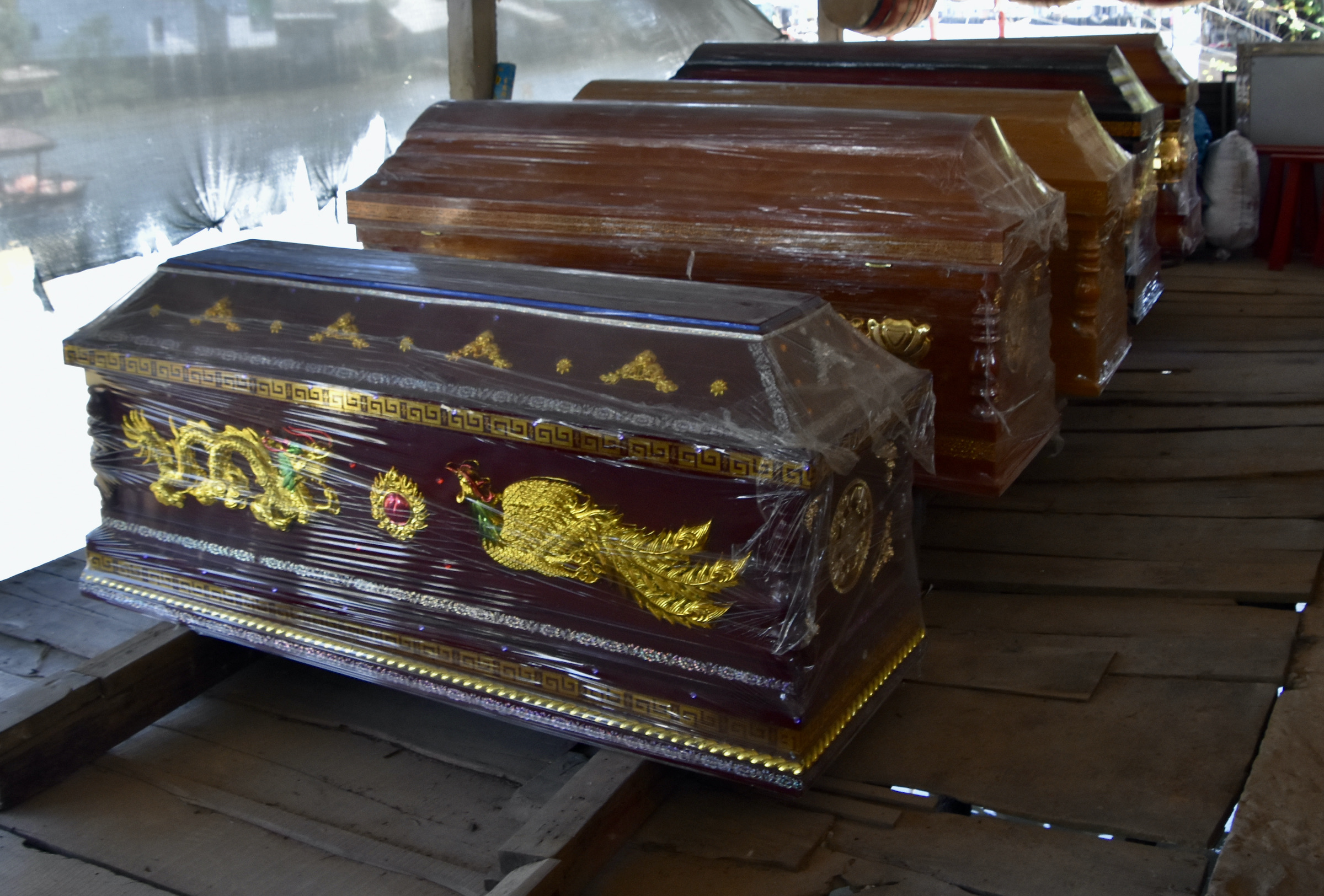
This was a family compound where we were the only tourists and they put on this ten minute play about a drunken husband and his harried wife. This guy was really good at portraying a falling down drunkard and was as funny as an old Charlie Chaplin silent.
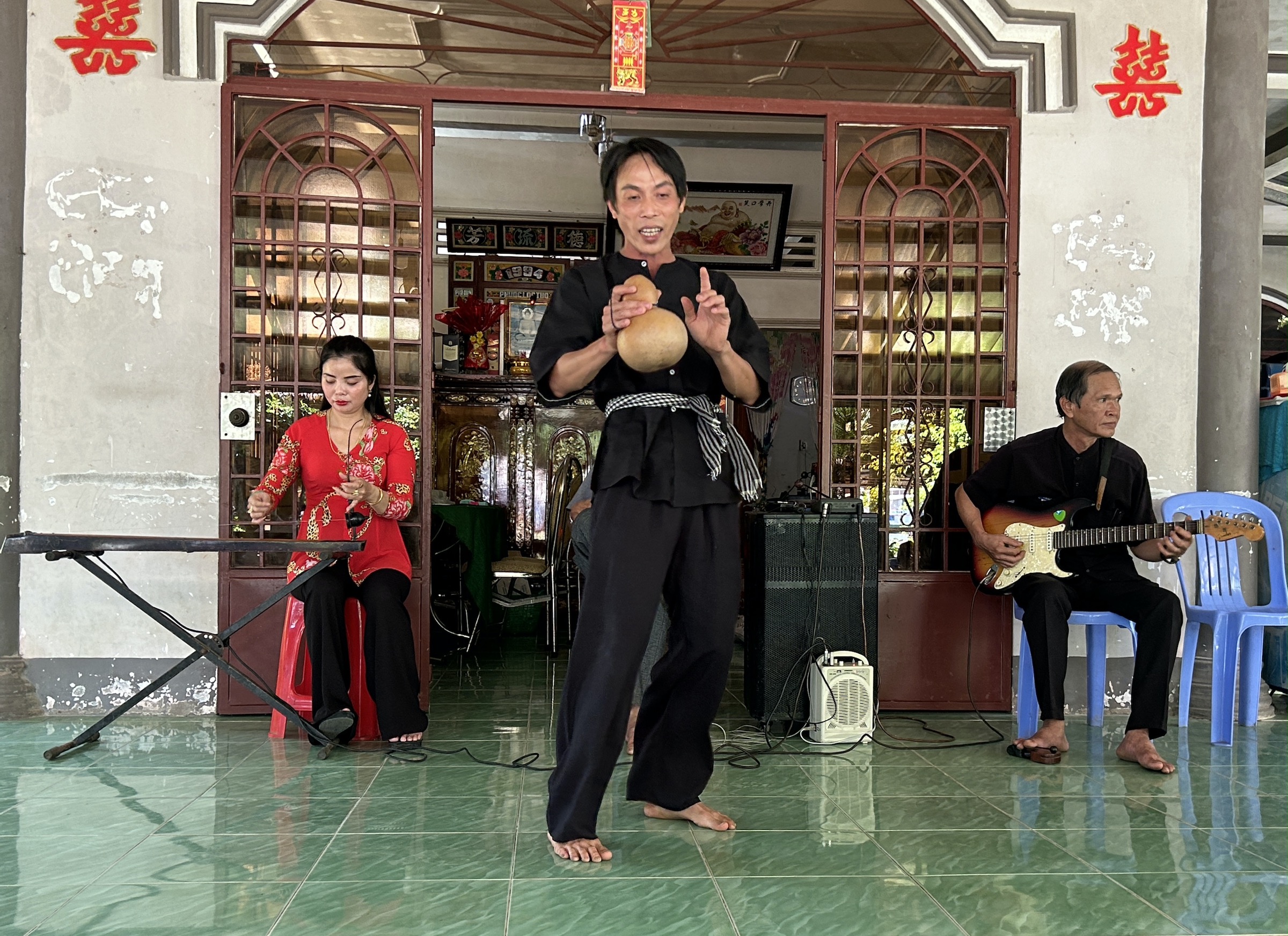
But in the end all was well and they were back together as a beaming couple. This was not something that was on the itinerary and a really pleasant surprise.
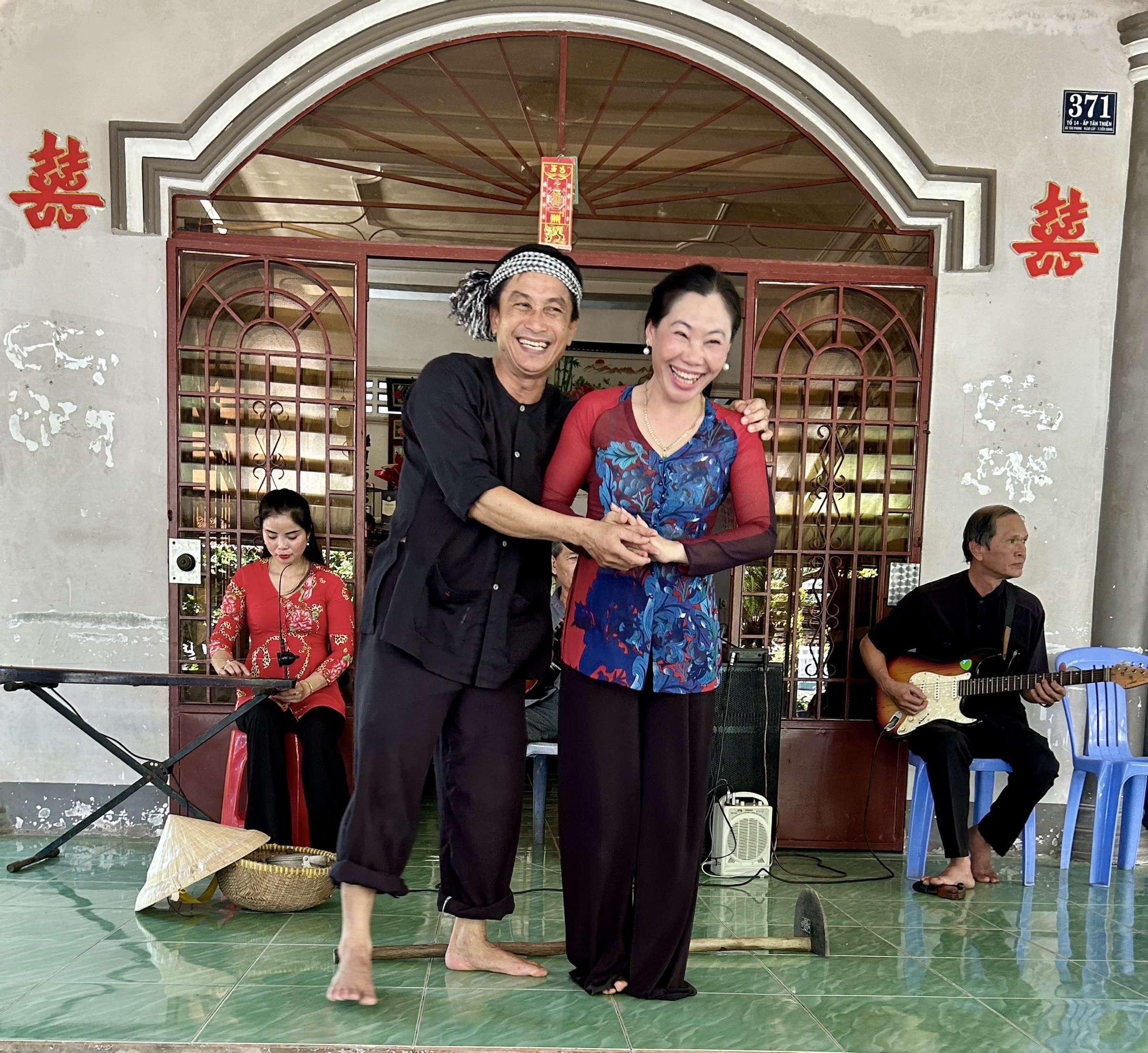
The couple had two of the nicest little kids who offered to let us share their puppies.
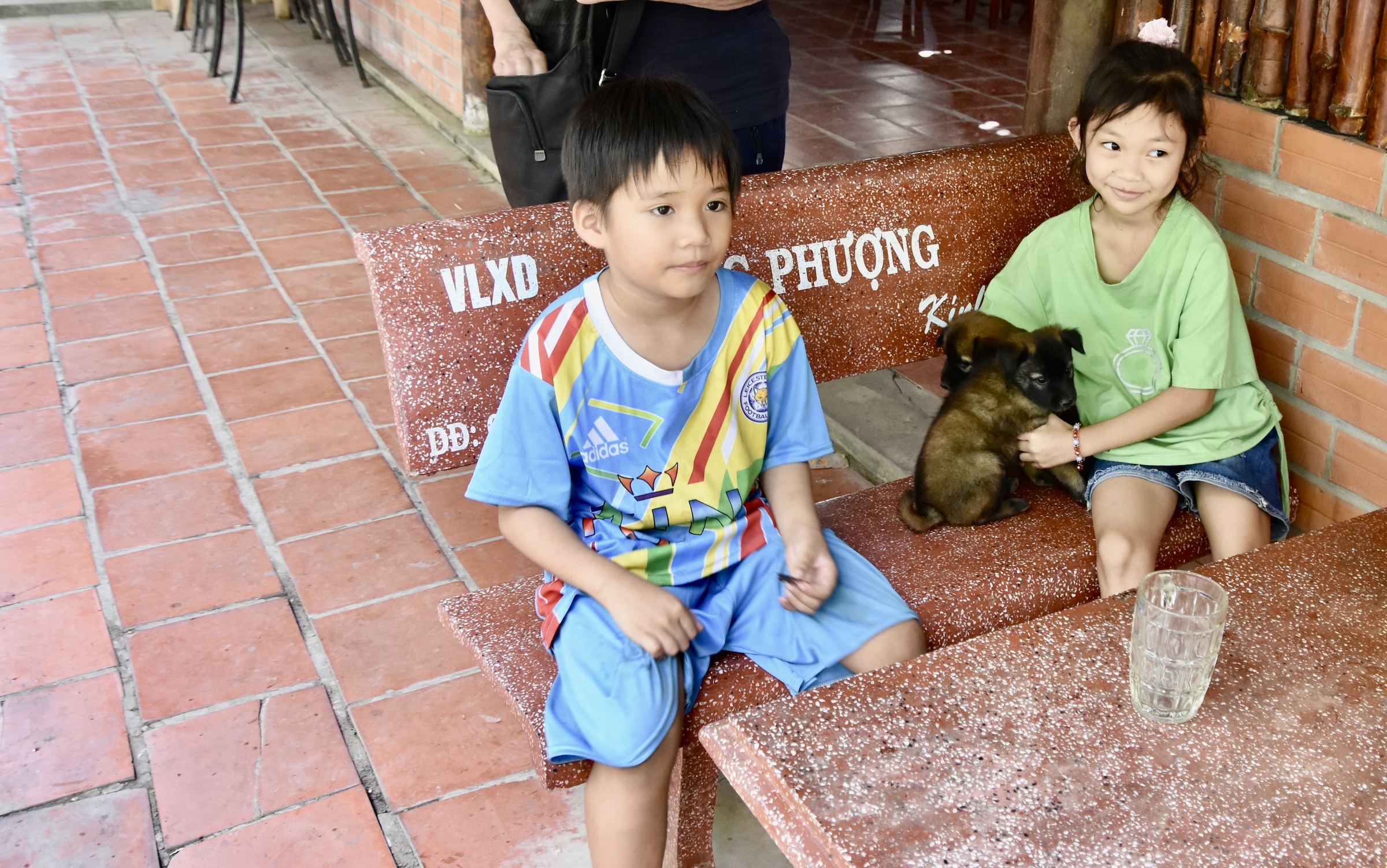
Alison gladly took them up on their offer. Thank God we already have two dogs or this guy might have become a Canadian citizen.
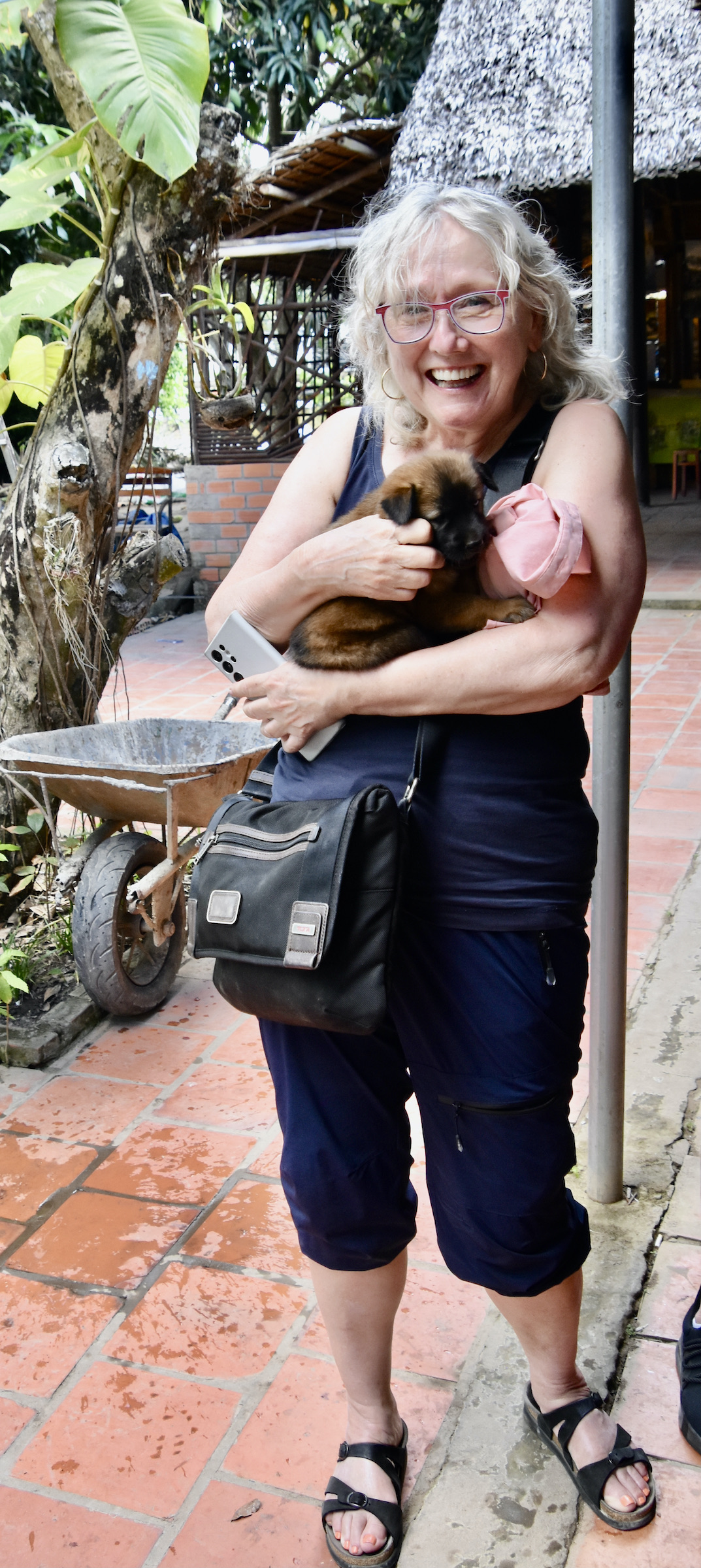
Later we took a sampan ride which ended at a very nice restaurant that specialized in elephant ear fish.
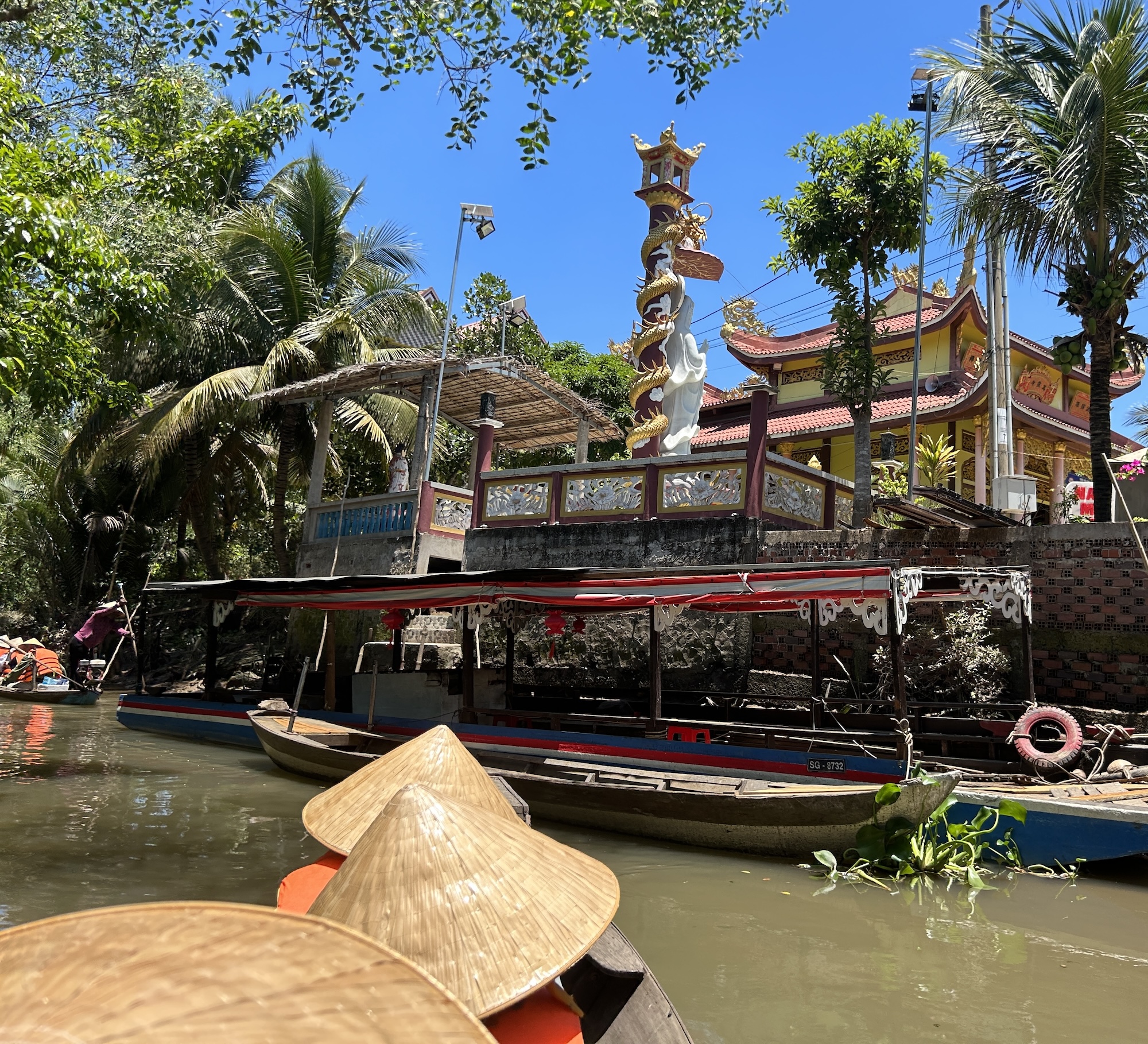 Sampan Ride
Sampan Ride
This native fish is a signature dish in the Mekong Delta and everybody agreed it was delicious.
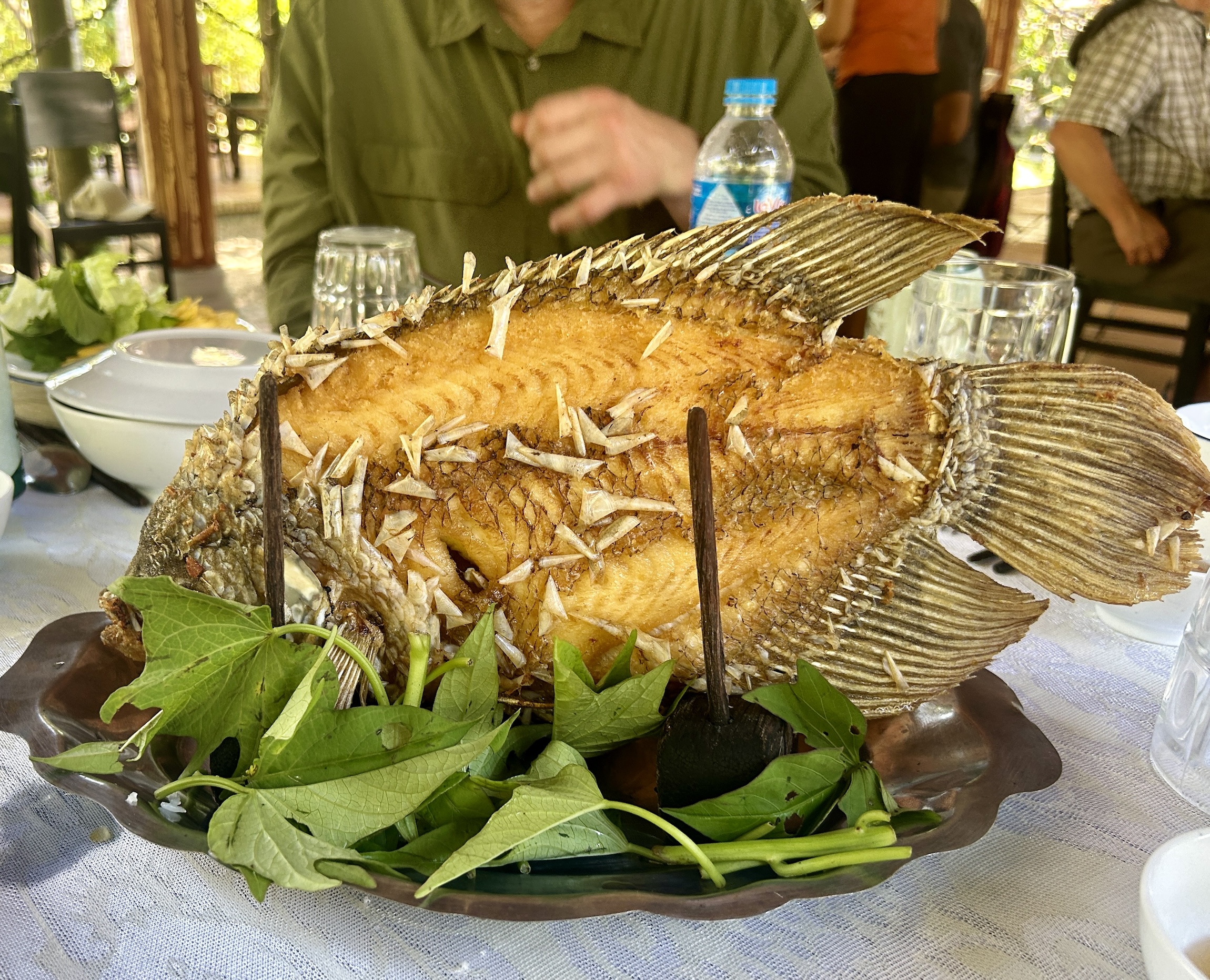
We spent our night in the Mekong Delta in the city of Can Tho which I was surprised to learn has over 1.2 million residents, because it had the feel of a much smaller place. With a very vibrant waterfront, it is the perfect place to say adieu to Vietnam. Fifteen days is really not long enough to get to know this great country, but I have to hand it to Adventures Abroad as they made sure we hit all the highlights and thanks to Claude and the local guides many of the off the beaten path places that often make the trip so special.
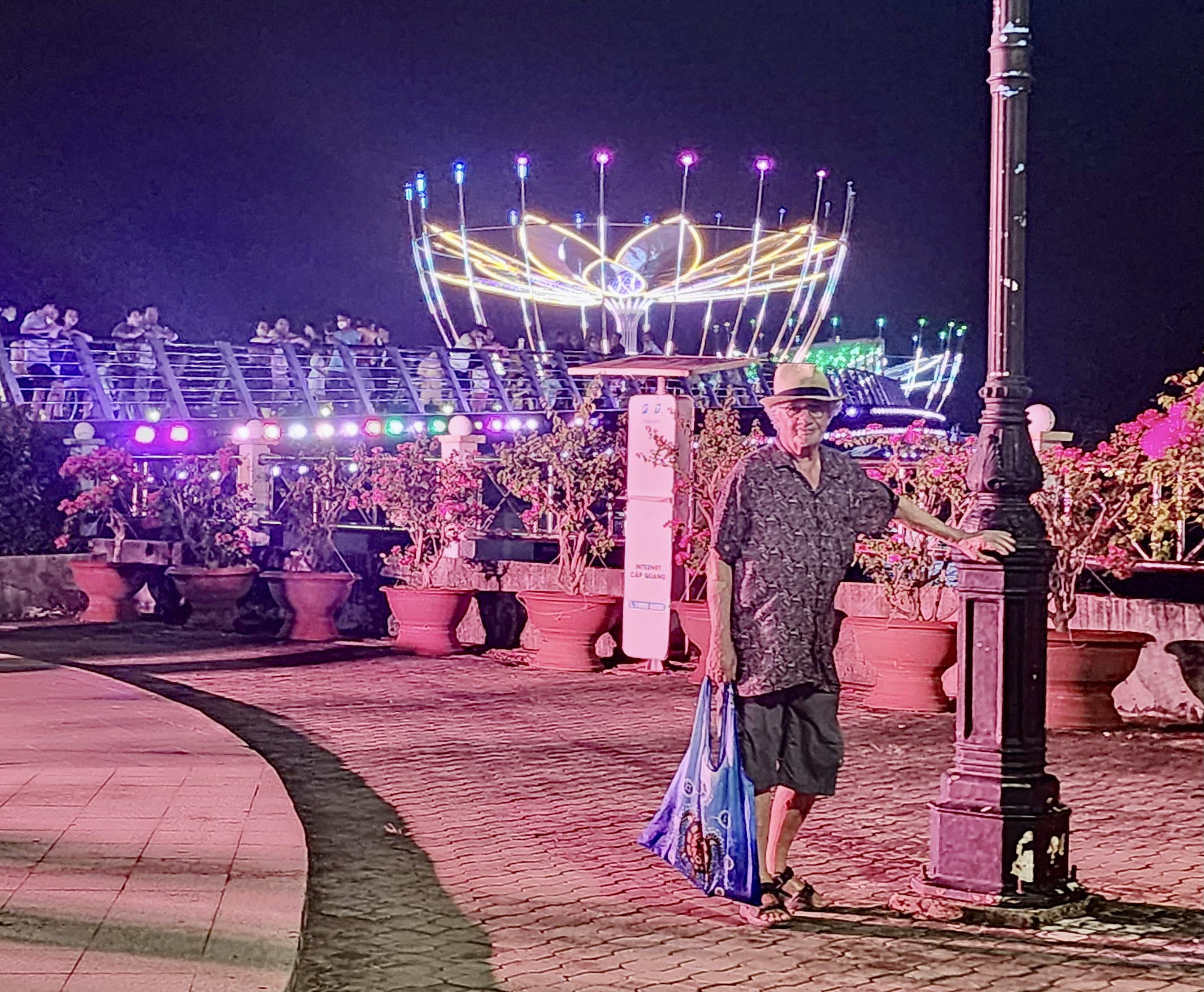
However, the Southeast Asia odyssey is not over. Please join Alison and me and the rest of the AA gang as we head to Cambodia for the grand finale.


